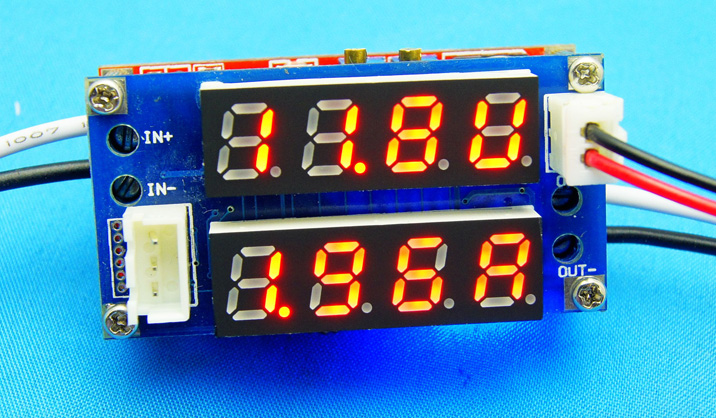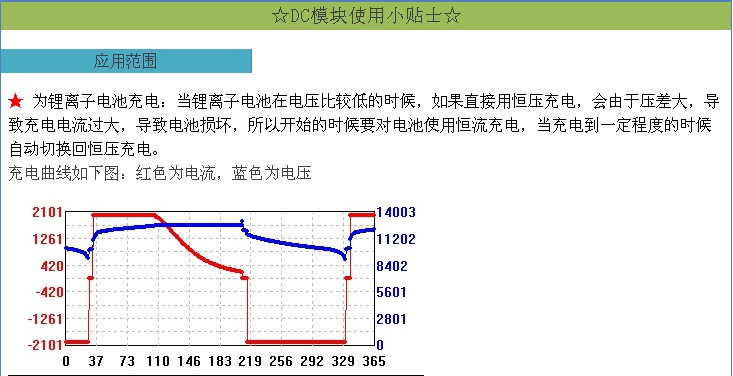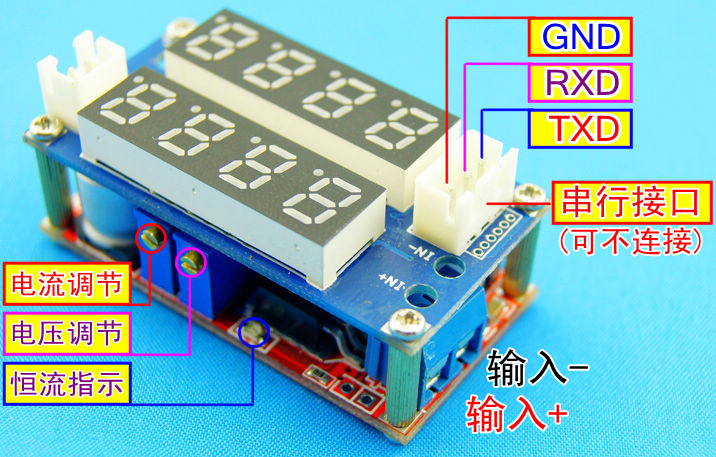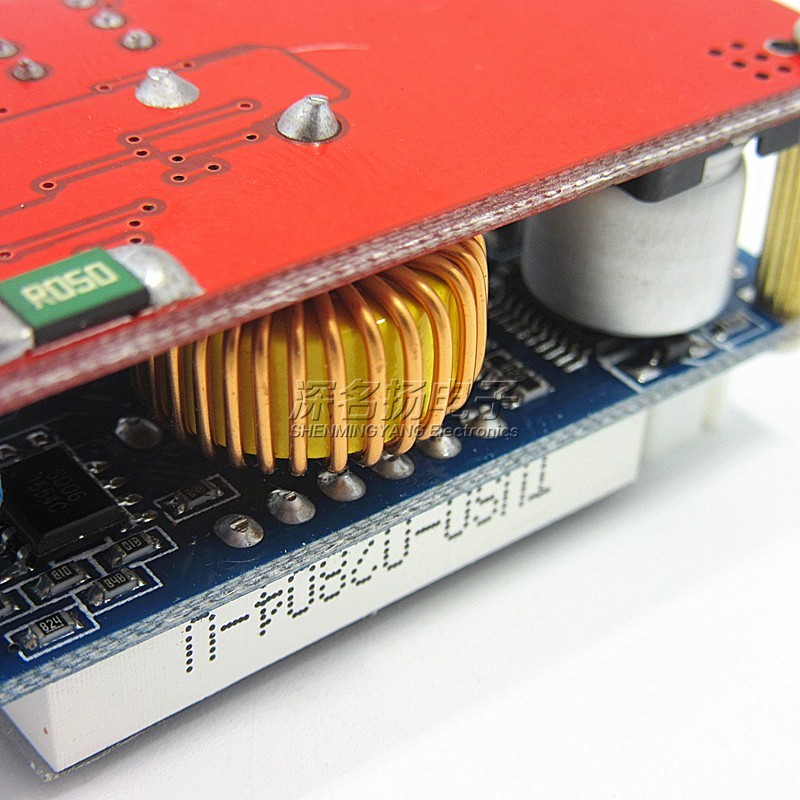5A CONSTANT CURRENT AND CONSTANT VOLTAGE LED DRIVE LITHIUM ION BATTERY CHARGING SERIAL Port
|
☆Power Properties ☆ |
|||
|
Module properties |
Non-isolated buckmodule |
Rectification |
Non-synchronous rectifier |
|
Input voltage |
5V-30V |
The output voltage |
0.8V -29V |
|
Output current |
Big 5A (more than 3A to enhance heat dissipation) |
Conversion efficiency |
95% (.high) |
|
On-off level |
300KHz |
Output ripple |
50mV (.large) 20M bandwidth |
|
Load Regulation |
±0.5% |
Voltage regulation rate |
±2.5% |
|
Operating temperature |
-40°C to +85°C |
size |
51*26.3*14(Length*Width*Height)(mm) |
|
Product te point: ★ The module uses imported high-quality chips, which has high efficiency (. 95% higher) and small heat output. It can go up to 5A current , and at the same time, it can control the output current with the original TI's op amp, so that the overall output is very stable. ★ This module uses low ESR original Sanyo filter capacitor, can make the ripple voltage as low as 50mV ! ★ This module uses a machine patch and reflow soldering. At the same time, each module undergoes a two-hour aging test before shipment to ensure high reliability. |
|||
|
☆Instrument properties ☆ |
|||
|
Module name |
Current and voltage meter |
measurement accuracy |
0.1% |
|
Refresh rate |
About 200ms |
Display method |
Dual 4-bit 0.28" digital tube |
|
Current range |
0A-5A |
voltage range |
5V-30V |
|
Working current |
Less than 15mA |
Display color |
red |
|
storage temperature |
-10°C to +65°C |
input resistance |
50 milliohms |
|
weight |
Peripheral size |
51*26.3*10mm |
|
|
Product te point: ★ This module is manufactured using high quality LED digital tubes, with high brightness and clear display even under the sun. ★ This module uses the imported microcontroller to sample and display the voltage, and carries out a large amount of data processing on the software to make the display accurate and stable. ★ This module is a full patch process, exquisite workmanship, and ultra-small size.
|
|||





★ This module is an adjustable buck module. The output voltage can be changed by adjusting the blue adjustable resistor on the module. The input and output differential voltage is 1V, and the small output voltage is 0.8V.
★ The IN- (input negative), IN+ (input positive), OUT- (output negative) and OUT+ (positive output) marked on the module must be correctly connected. Otherwise, the module may be damaged.
★ How to use the battery to charge:
1. Make sure that you need to charge the battery's float voltage and charge current, the module's input voltage;
2. Adjust the constant voltage leveler and adjust the output voltage to about 5V.
3. Measure the output short-circuit current with the current meter of the multimeter 10A, and at the same time adjust the constant-current potentiometer to make the output current reach the preset charging current value;
4. The default charge-to-turn lamp current is 0.1 times charging current (constant current value).
5. Adjust the constant voltage leveler so that the output voltage reaches the float voltage.
6. Connect the battery and try charging.
(Steps 1, 2, 3, 4 and 5 are for the module input and the output is empty and the battery is not connected.)
★ How to use the constant current LED driver:
1. Make sure that you need to drive the LED's working current and high working voltage;
2. Adjust the constant voltage leveler and adjust the output voltage to about 5V.
3. Measure the output short-circuit current with the current meter of the multimeter 10A, and adjust the constant current potentiometer to make the output current reach the preset LED working current;
4. Adjust the constant voltage leveler to make the output voltage reach the LED. High working voltage;
5. Connect the LED ,Test machine.
(Steps 1, 2, 3, and 4 are for module input and power output, and no output for no-load LED.)
★ Description of communication protocol:
1. This module has the function of communicating with the computer. The computer can easily read the module current and voltage data.
2. Since the output of this module is TTL level, to achieve communication with the computer, this level must be converted back to the computer-recognized RS232 level to achieve conversion.
3. The communication protocol is as follows:
Wave te rate: 9600 Bps
BB CC ADDR 00 XX XX CRC (current return command)
BB CC ADDR 01 XX XX CRC (Voltage Return Command)
among them
BB CC is the header (2 bytes)
ADDR is the module address (1 byte)








